I don’t know what trade I would have followed if I’d been born a couple hundred years ago. Maybe a tanner, like one of my ancestors. Maybe a farmer. Maybe even a writer, though I suspect not. But barring some unimaginable change in my personality, I’m pretty sure I would have been a fisherman and a hunter.
While some of us become sportsmen seemingly by chance, the rest of us, and I include myself in this group, have no choice in the matter. It’s who and what we are, and we live for the time we spend outdoors, moving to the age-old rhythms of the natural world and drinking in the purity of Creation. You just don’t take something like that out of a man.
Which is why I went to the Arctic.
It’s different up there. I don’t know how else to say it. It’s just different. Longer days, at least if you travel on the summer side of the two equinoxes, and no trees, and a sense of place that’s not so much new as it is ancient, as if our distant forebears once lived in a similar landscape, back in the time of mastodons and cave bears. In fact, the first sights and smells and sounds of those bare-boned mountains north of the Arctic Circle unleashed a handful of dim ancestral memories from some long-forgotten cairn, and for the first couple hours I felt as if the Old Ones were standing off in the distance, watching me in silence.
Yet the river—she’s called the Kongakut—was familiar, in the ways that rivers are, and even if there wasn’t a trout for hundreds of miles, rumor had it that there were both arctic grayling and arctic char in that cold, clear water.
The Brooks Range is one of the wildest places on the continent and I can promise you there’s nothing quite like getting dropped off on a lonesome gravel bar in the middle of nowhere and watching your only connection to civilization fly off for the distant comforts of Fairbanks. Our little group had everything we needed, though, with enough tents and rafts and fly rods for an expedition. Any more gear would have been too much of an umbilical cord for such pristine land.
There were eight of us on the trip. Ron and Jennifer were the guides, and you’d have to go a long ways to find better. Mark, Jad and I were writers hoping to get a taste of the Far North, while Julie was Mark’s wife and Bart and Betsy were our hosts.
It took me a little while to set up my tent and get my gear squared away after the plane left - it was cold and rainy, which always complicates things a bit—but I eventually got my act together and headed for the river with my 7-weight in hand. Jennifer stopped me on the way out of camp and asked if I had my pepper spray. I guess she figured it was bad form for one of her charges to get mauled the first day out, but I was already packing. I’d found some two-day-old griz tracks about twenty yards from where I’d pitched my tent and I wasn’t about to wander off without some sort of protection.
The river, as I mentioned earlier, seemed familiar. Which was a good thing, as I didn’t know much about the Kongakut and you could have stuffed all my char and grayling experience inside my water bottle. I started out with a big black leech—I’d read somewhere that black leeches were the go-to fly on the north-flowing rivers that dump into the Arctic Ocean—yet despite covering a bunch of gorgeous water I didn’t coax a single strike. If there was a char or a grayling in that clear current, you couldn’t have proved it by me. At least until I saw a fish rise.
At which point it was back to camp for the 5-weight and then right back out with the new rod and a box of dry flies. Hell, you can’t chuck a great big streamer at rising fish. It isn’t moral, at least not when they’re ignoring the damn thing. So dry flies it was. It still took me three or four fly changes before I found the right pattern—a little Griffith’s gnat—but then I had solid action on grayling for a couple hours. And not little guys, either. The fish I hooked ran from 14” all the way up to 20”, and they were incredibly strong. I’m only speculating here, but I’d imagine that such wild, harsh country breeds its share of extra-tough fish. Perhaps there’s some truth to the old saw that says that anything that doesn’t kill you will make you stronger. In any case, those fish fought like crazy
While I’m on the subject, I should probably mention that there’s something about grayling that just blows me away. Maybe it’s their huge dorsal fin, or their not-quite blue, not-quite-purple electric underwater sheen that makes it seem like they’ve been swimming through the Northern Lights. Or maybe it’s simply the fact that they love to eat off the surface. But whatever the reason, grayling are a real treat, especially when you’ve been working a steady diet of browns and rainbows all year long and you’re hankering for a bit of a change.

At the time I really thought that first afternoon’s angling was special, but the next day, a couple of miles downstream, we hit the grayling mother lode. We were just about ready for lunch when we came floating around a corner into a pool alive with slashing rises. We beached the rafts and spread out. If the fish had been a little less gluttonous, or for that matter, if I’d been a little less gluttonous, I’d probably be able to fill you in on how everyone else fared. But I’m afraid that I allowed myself to slip into that predatory zone where everything out on the periphery simply fades away.
For the next couple of hours those grayling were like black holes and they sucked me in, one after the other after the other, until the thoughtful, logical part of my mind was stripped away and the whole experience condensed into instinct and reaction. Outwardly, nothing changed. Inside ... well, we come alive when we allow ourselves to live in the moment. That hard, dry husk that surrounds us, the persona we wear for society, is revealed as little more than an empty shell and we’re left with the knowledge—no, that’s no quite right; let’s say the intuitive understanding—that we are something far greater, far more elemental and connected. For a time—minutes if we’re lucky, hours if we’re blessed—we can touch the living world around us; we can forget ourselves and surrender to the natural rhythms we usually ignore.
That night, lying warm in my sleeping bag beneath the bare slopes of the Brooks range, I hoped I wasn’t the only one who’d felt it. Maybe some of the others touched it, too; that place where words begin to falter.
We spent that second night on a brushy bench over the river and in the morning, after breakfast, I walked down to the water with my 7-weight in hand. It was a gorgeous spot and I started wading down through a boulder-strewn stretch of water, hoping for a char or two. I was facing east, casting into the newly risen sun and soaking up the warmth, when my line stopped. I set the hook and there was the trip’s very first arctic char. I don’t think she was more than a stone’s throw from where a big fish had followed Ron’s offering back to the bank the evening before.
She fought hard and deep, then up on the surface for a second, and then back down into the rocks, and it was all I could do to land her. She turned out to be incredibly bright silver, with brilliant pink spots and fins edged in white. Yet in all honesty my description doesn’t do her justice. She was literally the Kongakut come alive, condensed from river water and sunlight into six pounds of absolute perfection. I don’t know that I’ve ever touched a more beautiful living creature and I was overcome by the realization that I was not worthy of this place. I wasn’t selfless enough, I wasn’t wise enough. And yet here I was, standing in some of the purest, cleanest water on the planet and holding an incredible gift—albeit one I didn’t deserve.
It’s still a little hard to believe.
I’m not even going to tell you about what came afterwards. (Suffice it to say that there was more than one beautiful char in that run, and the Good Lord was very, very generous to me that morning.) With one exception.
I’d ended up fishing my way downstream with the kind of singular focus that you might expect of an angling junkie, only to become aware—slowly, painfully aware—that rocks were falling behind me as something skirted a cliff face just back from the water’s edge.
Rocks were falling. In serious bear country.
Did you ever feel like you were born stupid and had only gotten dumber? Because that’s how I felt right then. I swore a blue streak at myself and then silently mouthed something along the lines of, “You need to stay aware of everything around you. You can’t get so caught up in your fishing. Not with all the grizzly bears around here.”
The rocks kept falling.
So I turned around, figuring that I’d better find out what the hell was going on behind me, and there they were.
A dozen, maybe fourteen, dall sheep, eating lichen off the rocks. Wild, wild stuff.
There were four of us to a raft, along with a huge mound of gear, and for most of the trip we paddled almost as much as we fished. The first couple days I was in Ron’s raft with Bart and Betsy, and Ron kept us amused with tales we probably wouldn’t have believed if we’d heard them under different circumstances. But out there in the middle of the great beyond, with the Arctic Ocean a couple days to the north and the Brooks Range funneling the Kongakut ever further from civilization, all those stories about griz and caribou and musk ox seemed incredibly real. Of course, when you’re walking along the river’s edge and brand new stories are literally laid out for you to read in the sand—here a bear track, there a wolf track, with caribou tracks scattered in between—well, Ron’s yarns tended to become more vivid every time we stepped over a clear print or came floating around a bend in the river and saw the track-makers themselves.
It’s actually hard to concentrate on the angling when you’re in such amazing country but we did a pretty good job of it. Mark ended up hooking more fish than just about anybody else, and his eight pound char proved to be the trip’s biggest. I think Julie actually would have outfished her husband if she’d ever gotten serious, but you know how that goes—she’d catch a bunch of nice char and grayling and then put the rod away for a while. Bart and Betsy hooked their fair share, too, leaving Jad, who’s more of a photographer than an angler, as the only one who didn’t wet a line on a regular basis.
In the end, condensing a week’s worth of sights, sounds and experiences into a few thousand words is hard enough under ordinary circumstances. In this case it’s almost impossible. We had days where the temps were up in the 60s and the haze from forest fires far to our south dropped an ethereal curtain around us, as well as days where it was sunny and beautiful. We had wind and then calm, rain and then blue skies, the occasional (and sometimes more than occasional) mosquito, and a river that started out low and clear and got progressively higher and dirtier as we dropped down out of the Brooks range.
We floated through mountains that would take your breath away, and then down onto the coastal plain, the tundra, where the river braided out and the fog came in. We saw bears and caribou and snowy owls and enough waterfowl for an entire lifetime. There were even, and I swear I’m not making this up, rising fish eating mayflies a couple of miles from where the Kongakut hit the cold salt water of the Arctic Ocean.
And then, after seven days of great company and great fishing and Jennifer’s incredible griz story - when was the last time you heard the words “bear” and “bra” in the same sentence?—we ended up paddling through huge slabs of blue-green ice to reach our destination; a little gravel island just off the coast. That monstrous ice field was surreal and stunning and otherworldly, not to mention cold as a witch’s teat, and I don’t think there’s any way you can appreciate how truly strange it is to take a couple of rafts into a labyrinth of ice and running water. Not without being there yourself. Thank God for Jennifer and Ron. Lesser guides might never have found their way through that freezing maze. Of course, lesser guides probably wouldn’t be working at the top of the world, floating ice-fed rivers through the wilds of the Arctic National Wildlife Refuge.
There’s one last thing I want to touch on before I wrap up this story. On our journey up to the Refuge, we flew from Fairbanks to Arctic Village, where we changed planes and spent some time wandering around and getting a feel for that far north country. The Gwich’in people, who live in Arctic Village as well as a number of other settlements in Alaska and northern Canada, still maintain a subsistence lifestyle. They hunt and fish for their living, and the caribou, who calve on the coastal plain in the Refuge, are far and away the most important part of their diet. Without the caribou, the Gwich’in, who call themselves “Caribou People,” would cease to exist.
Now you’ve probably heard the arguments over protecting ANWR. Drilling advocates say that the oil we’re sure to find—enough to supply all our domestic needs for about six months, according to most accounts—is worth whatever ecological risks are entailed. On the other hand, the folks who want to protect ANWR point out the amazing wildlife values of the area, and how the coastal plain is incredibly important to the Porcupine Caribou herd as well as to untold numbers of waterfowl.
Now I can attest to the fact that the Refuge is a magnificent place with beautiful vistas, tons of wildlife and great hunting & fishing opportunities. But nobody wants to talk about the Gwich’in. Well, here it is in black and white. The Gwich’in Nation will not survive without a healthy Porcupine caribou herd, and the Porcupine herd will go the way of the dodo and the passenger pigeon if drilling disturbs their only calving site. The coastal plain is the one place where the caribou can give birth to their young without being decimated by predators or overwhelmed by biting insects. The Gwich'in call the the calving grounds, "Iizhik Gwats'an Gwandaii Goodlit"—“The Sacred Place Where Life Begins.”
If you’re reading this, you’re likely an angler, a hunter or both. And as such, I believe you have a moral and ethical obligation to stand by other hunters and fishermen. We all bear that burden, and we need to make it clear—crystal clear—to the politicians in Washington, D.C. that we support our own. We won’t throw an entire hunting culture under the bus. Not for six month’s worth of crude, not for any price. We need to do the right thing, which means supporting the Gwich’in people and protecting the caribou. It’s just that simple. We’re hunters and fishermen. We stand up for each other.
I’ve been blessed to spend time with rod, gun and bow in an awful lot of wonderful places, but I’ve never been anywhere quite like the Arctic National Wildlife Refuge. It’s truly so far outside the scope of my other experiences as to defy comparison. I don’t know that you’ll ever have the chance to visit the Refuge—not many of us do—but if the opportunity arises, you should go. Go for the fishing, which is excellent, or for the hunting, which by all accounts is superb, or simply to touch and feel a place that can’t help but resonate in your heart.
And if you do go, give thanks for a vast landscape that holds everything from griz and caribou and dall sheep to polar bear and musk ox. It’s a damn special place, and we should all pray that it stays that way.





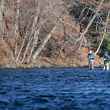
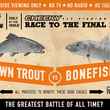
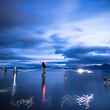
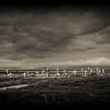



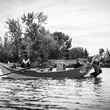
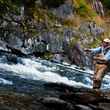



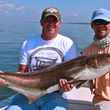
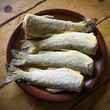



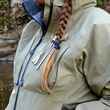




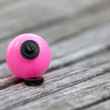
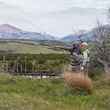


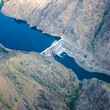
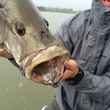
Comments